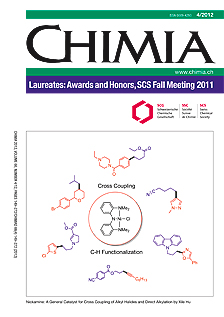Dynamical Processes in Rydberg-Stark Deceleration and Trapping of Atoms and Molecules
DOI:
https://doi.org/10.2533/chimia.2012.208Keywords:
Blackbody radiation, Cold molecules, Rydberg states, Stark decelerationAbstract
The interaction between inhomogeneous electric fields and the large electric dipole moments of atoms and molecules in Rydberg states of high principal quantum number can be used to efficiently accelerate and decelerate atoms and molecules in the gas phase. We describe here how hydrogen atoms and molecules initially moving with velocities of ?600 m/s in supersonic beams can be decelerated to zero velocity and loaded into electric traps. The long observation times that are made possible by the electrostatic trapping enables one to study slow relaxation processes. Experiments are presented in which we have observed photoionization processes and transitions between Rydberg states induced by blackbody radiation at temperatures between 10 K and 300 K on a time scale of several milliseconds. Comparison of these processes in Rydberg states of H and H2 suggests the importance, in H2, of collisional processes and of the process of blackbody-radiation-induced predissociation.Downloads
Published
2012-04-25
Issue
Section
Scientific Articles
License
Copyright (c) 2012 Swiss Chemical Society

This work is licensed under a Creative Commons Attribution-NonCommercial 4.0 International License.
How to Cite
[1]
Chimia 2012, 66, 208, DOI: 10.2533/chimia.2012.208.







